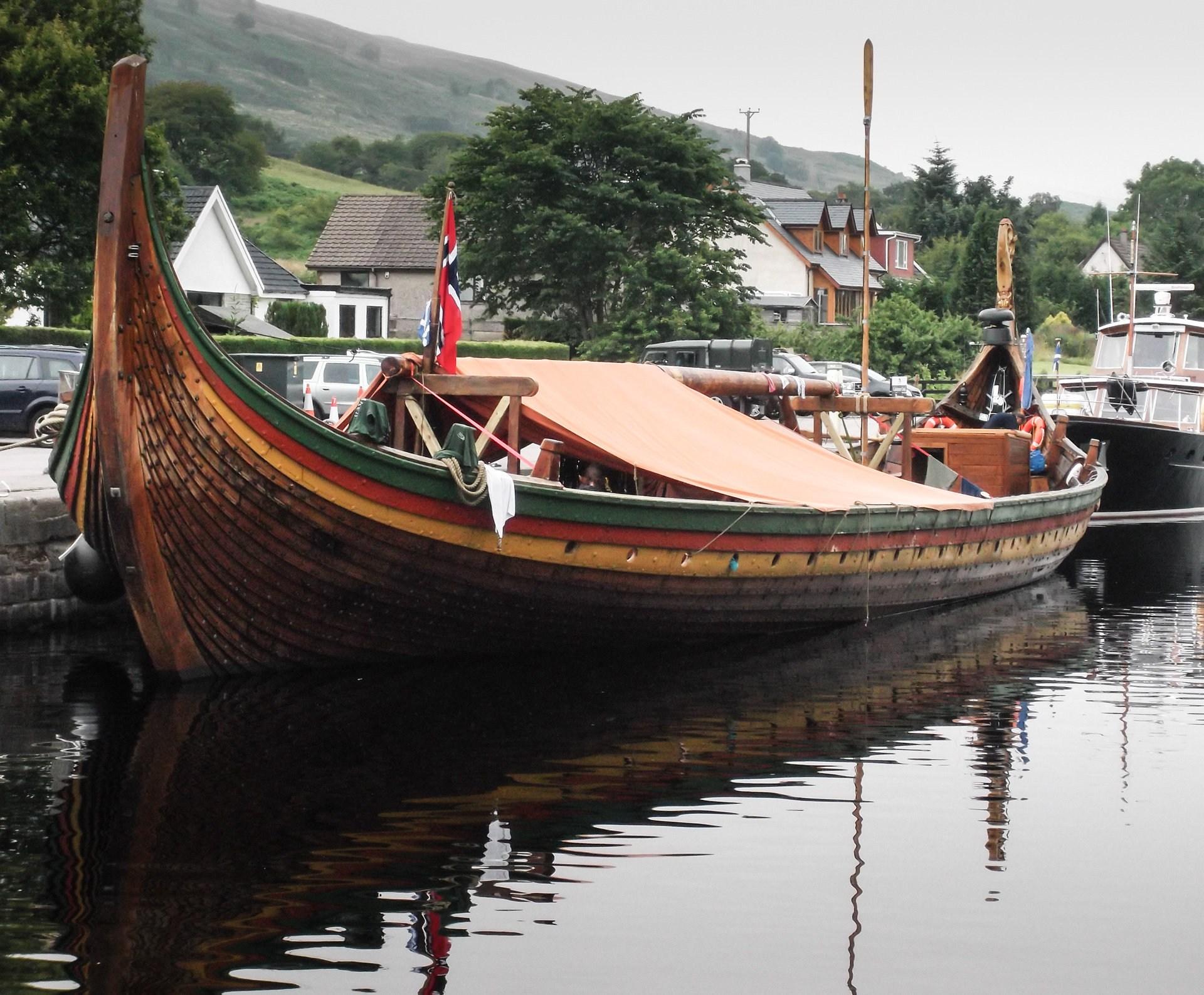A Viking longship limped along the Caledonian Canal this morning after losing her mast in high seas on an historical voyage from Norway.
The impressive Draken Harald Hårfagre (Dragon Harald Fairhair) – the largest Viking ship built in modern times – had to divert along the canal to travel to Liverpool for repairs and started making her way through Neptune’s Staircase at Banavie in Lochaber at around 8am this morning.
Her Swedish captain, Bjorn Ahlander, said that, at 112ft long and 26ft wide, she was the largest boat able to negotiate the locks on the canal.
He explained that they left Haugesund in Norway on July 1 on an historical voyage to visit Viking sites.
They had visited Shetland and were on their way to Orkney when the damage occurred. Mr Ahlander said: “We were tacking about 100 nautical miles from Orkney in a combination of heavy sea and strong winds. The mast was broken and went overboard.
“We then went back to the Shetland Islands and from there we altered our course to come along the Caledonian Canal because we did not have any rig.
“We are now going down to the Isle of Man, then on to Liverpool, where we will be stopping for two weeks to make and erect the new mast.”
He added that the crew would be making the mast themselves from timber that has been sourced from a Scottish forest.
They will then set sail for France before following the east coast of Britain back up to Shetland and returning to Norway on August 22.
Mr Ahlander said: “We did not intend to come this way, but the canal is beautiful and everyone loves it.”
He explained that the ship had an international crew of 30 – half are paid, the rest are volunteers.
The ship, owned by Norwegian businessman Sigurd Aase, was built in 2012 as a replica of the late-Viking Age Leidang ships of the Norse Sagas, which continued to be used in Norway into the early Medieval period.
It was named after the king who unified Norway in the late 9th century and, although designed as a sailing vessel, up to 100 rowers are needed to row it up rivers and into harbour. However, she also has engines, pumps and firefighting equipment to comply with modern safety standards.
The planned route would have taken them to Orkney, the Western Isles and then down the west coast of the mainland and into the Irish Sea.
